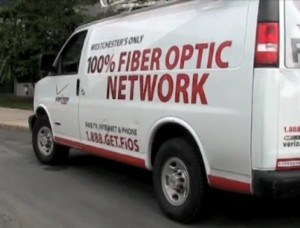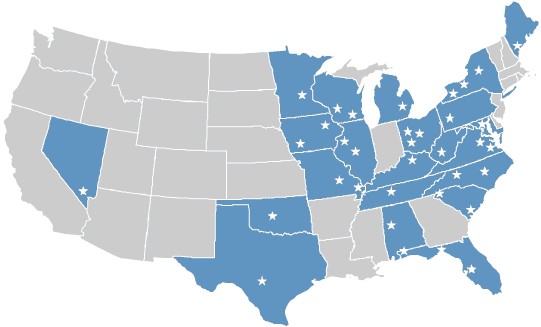Time Warner Cable and Fox are now into their final day of negotiations before the agreement expires governing Fox-owned affiliate stations and cable networks.
One thing that the dispute has accomplished is increasing media attention on both companies and a spotlight on the business models of television programming and distribution. It used to be so simple – television programming would air on broadcast television, enjoy massive audiences and the lucrative ad revenue that comes from having top-rated programming. Cable networks couldn’t survive on the much smaller ad revenue they earn from their smaller audiences, so they charged cable operators a small fee for every subscriber who could watch their channels.
With the advent of TiVo and other digital video recorders, online viewing, and the audience erosion that comes from both, what worked for more than 50 years didn’t work so well anymore. Time-shifting viewers no longer felt committed to watching live television, satisfied with being able to watch when they want and fast forward past the increasing amount of advertising television stations crammed into programming. With broadband, viewers could download or stream their favorite programs online, often for free and with limited (if any) commercials. Cable networks that used to be content running older syndicated programming, movies, and low budget documentaries and specials began creating their own original programming, often just as good as anything the networks produced. Subscription fees charged programmers increased accordingly to help finance these shows.
Today, some cable networks are coming close to rivaling the viewership of broadcast networks’ lesser-watched programming. If the economic downturn didn’t challenge the advertising industry, the ongoing loss of network television viewers would have accomplished the same thing – lower ad rates for ABC, CBS, NBC, and Fox.
At the heart of the debate is a new discussion about whether “free over the air television” is a sustainable business model. Networks like Fox evidently don’t think so, which is why they seek payment from the pay television industry, be it cable, FiOS, U-verse, or satellite. Since the majority of Americans now watch television through one of these services or through their broadband connection, there is plenty to be made from such payments. Of course, those costs are passed on to you.
The result? You are now paying for “free television.”
The hardball game between Fox and Time Warner Cable will be replayed often between the other networks and programmers and pay television companies.
Today’s video reports include another update from the business side of the story, several additional reports from impacted Fox stations, and basic education about what television antennas are all about.
[flv width=”640″ height=”500″]http://www.phillipdampier.com/video/Bloomberg Reporter Stelter on News Corp Time Warner Cable Talks 12-31-09.flv[/flv]
New York Times reporter Brian Stelter reports the two parties remain “pretty far apart” from an agreement in this report from Bloomberg News. (2 minutes)
[flv]http://www.phillipdampier.com/video/CNBC Time Warner Fox Dispute 12-31-09.flv[/flv]
CNBC discusses the business side of the Time Warner Cable-Fox dispute, and now Sen. John Kerry (D-Mass.) has put himself in the middle of the dispute as well. (1 minute)
[flv width=”480″ height=”380″]http://www.phillipdampier.com/video/KXAN Austin Cable dispute could turn off bowl games 12-31-09.flv[/flv]
In Austin, KXAN-TV reports Time Warner Cable has been telling Texas viewers they can watch most of the Fox Network programming on Hulu for free. Some Austin residents are sick of hearing about the dispute and are abandoning Time Warner Cable for DirecTV. “Football is everything in Texas,” say some who are watching the dispute with concern. (3 minutes)
[flv width=”640″ height=”500″]http://www.phillipdampier.com/video/KDFW Dallas Watch FOX 4 without Time Warner 12-31-09.flv[/flv]
Some local Fox stations are teaching their viewers how to receive their stations if Time Warner Cable no longer carries them on their lineup. KDFW-TV in Dallas went to Best Buy where they’re only too happy to sell antennas and digital converter boxes to Metroplex residents. (2 minutes)
[flv width=”640″ height=”500″]http://www.phillipdampier.com/video/WOFL Orlando Fox Orlando Affiliate Teaches Viewers About Antennas 12-30-09.flv[/flv]
WOFL-TV in Orlando spent part of the newscast teaching people what a TV antenna is. For many under 30, television viewing has always been through cable or satellite, never over-the-air, so the concept of rabbit ears is a new one for some. (1 minute)
Lots more to watch below the page break. Click the link below to continue!
… Continue Reading
 Road Runner Turbo is getting a makeover in Indianapolis. Faster speeds are forthcoming, but at a higher price.
Road Runner Turbo is getting a makeover in Indianapolis. Faster speeds are forthcoming, but at a higher price.

 Subscribe
Subscribe


